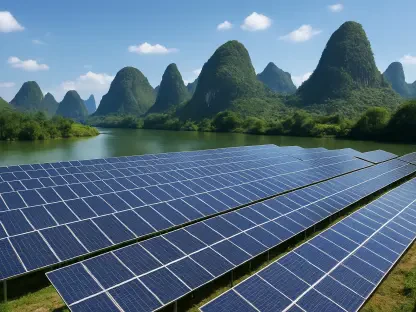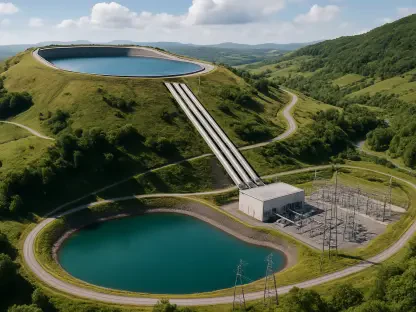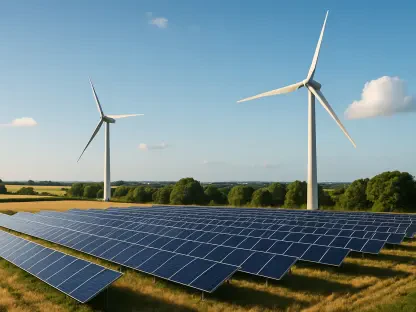I’m thrilled to sit down with Christopher Hailstone, a seasoned expert in energy management and renewable energy with a deep understanding of electricity delivery. As our Utilities expert, Christopher offers invaluable insights into grid reliability and security. Today, we’re diving into Xcel Energy Minnesota’s groundbreaking Capacity*Connect proposal, a pioneering effort to integrate distributed battery storage into grid planning. Our conversation explores the vision behind this initiative, the strategic rollout of battery resources, the role of partnerships in deployment, the anticipated benefits for the grid and local communities, and how this fits into broader energy goals in the Upper Midwest. Let’s get started.
Can you walk us through the core idea behind Xcel Energy’s Capacity*Connect proposal and what makes it so unique in the energy sector?
Absolutely, Silvia. The Capacity*Connect proposal is a forward-thinking initiative by Xcel Energy Minnesota to integrate a network of distributed battery storage systems into their grid planning. The goal is to procure up to 200 MW of capacity by 2028, using smaller 1-3 MW batteries placed at strategic points across their service area. What makes it unique—and why it’s being called a “first-of-its-kind”—is how it embeds these distributed resources directly into system planning and operations. Unlike traditional large-scale storage or generation projects, this focuses on decentralizing capacity to optimize the distribution system and serve all customers more reliably.
How is Xcel planning to implement this network of distributed battery resources across Minnesota?
The rollout is quite strategic. Xcel aims to have up to 200 MW in place by 2028, starting with an initial procurement that could be as low as 50 MW depending on feasibility and cost. They’re identifying strategic locations on the grid where these smaller batteries—ranging from 1 to 3 MW—can have the most impact, often near high-demand or constrained areas. Potential hosts include local businesses, industrial sites, or even nonprofits, who would be compensated for hosting these systems. It’s a win-win: hosts get financial benefits, and Xcel enhances grid stability in targeted zones.
Can you elaborate on the partnership with Sparkfund and how they’re contributing to this ambitious project?
Certainly. Sparkfund plays a pivotal role as a deployment services company specializing in distributed energy resources. They’re tasked with evaluating and securing battery sites, which includes marketing to potential hosts and locking in those strategic locations. Beyond that, they handle the procurement of battery equipment, manage vendor relationships, and ensure competitive contracting. They’re also responsible for the long-term operations and maintenance of these systems, as well as facilitating data flows to maximize the value of these assets. Essentially, they’re the boots on the ground making this vision operational.
What are some of the key advantages Xcel hopes to gain from building out this distributed battery network?
The benefits are multi-layered. Primarily, this approach helps avoid expensive and time-intensive upgrades to the bulk grid system by addressing capacity needs at a local level. It also optimizes the distribution system, which brings more localized benefits like improved reliability and reduced strain on infrastructure. For customers, this translates to a more stable energy supply, especially in areas prone to outages or high demand. Over time, it’s about building a smarter, more resilient grid that can adapt to future needs while keeping costs in check.
The budget for this program has a wide range, from $152 million to $430 million. What’s behind this variation in cost?
The range reflects the scalability of the project. The lower end, $152 million, is based on a minimum procurement of 50 MW, while the upper end of $430 million assumes the full 200 MW deployment. Several factors influence where they’ll land within that spectrum, including the number of suitable host sites they can secure, the cost of battery technology at the time of procurement, and the complexity of integrating these systems into the existing grid. It’s a flexible framework to ensure they can adapt based on real-world conditions and needs.
Xcel has noted that not all benefits of this program will be immediate. Can you shed some light on the long-term vision here?
That’s right, Silvia. While some benefits like enhanced local reliability will be felt sooner, the full impact of Capacity*Connect is geared toward the future. Long-term, Xcel is looking at creating a more flexible and efficient grid that can handle increasing renewable energy integration and growing demand without massive overhauls. It’s also about setting a precedent for how utilities can incorporate distributed resources into planning, potentially transforming energy management practices. This is a stepping stone to an energy future where every asset is used to its fullest potential.
How does this proposal connect to Xcel’s larger energy strategy in the Upper Midwest region?
It’s a key piece of the puzzle. Xcel’s Upper Midwest Energy Plan, approved earlier this year, sets a target of 600 MW of energy storage by 2030. The 200 MW from Capacity*Connect is a significant chunk of that goal, showcasing how distributed storage can complement larger renewable and dispatchable resources. It’s part of a broader strategy to modernize the grid, support economic growth, and meet community needs while transitioning to cleaner energy. This program is a practical example of how they’re balancing innovation with reliability across the region.
Looking ahead, what’s your forecast for the role of distributed energy storage in shaping the future of grid systems?
I’m very optimistic about distributed energy storage. I believe it’s going to become a cornerstone of modern grid systems over the next decade. As renewable energy sources like wind and solar continue to grow, we’ll need flexible, localized storage to balance supply and demand in real time. Programs like Capacity*Connect are proving that we can enhance reliability and cut costs by decentralizing capacity. My forecast is that we’ll see more utilities adopting similar models, integrating storage at the distribution level to create smarter, more resilient grids that can handle the challenges of a changing energy landscape.









